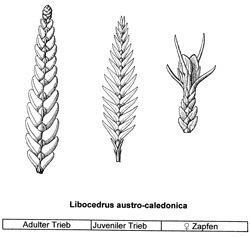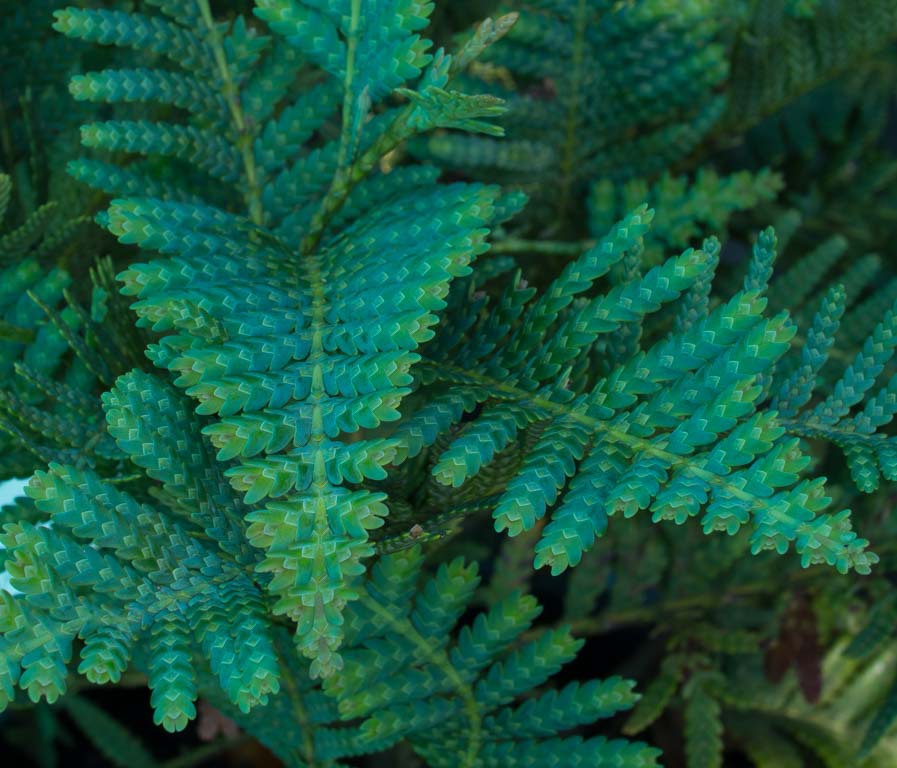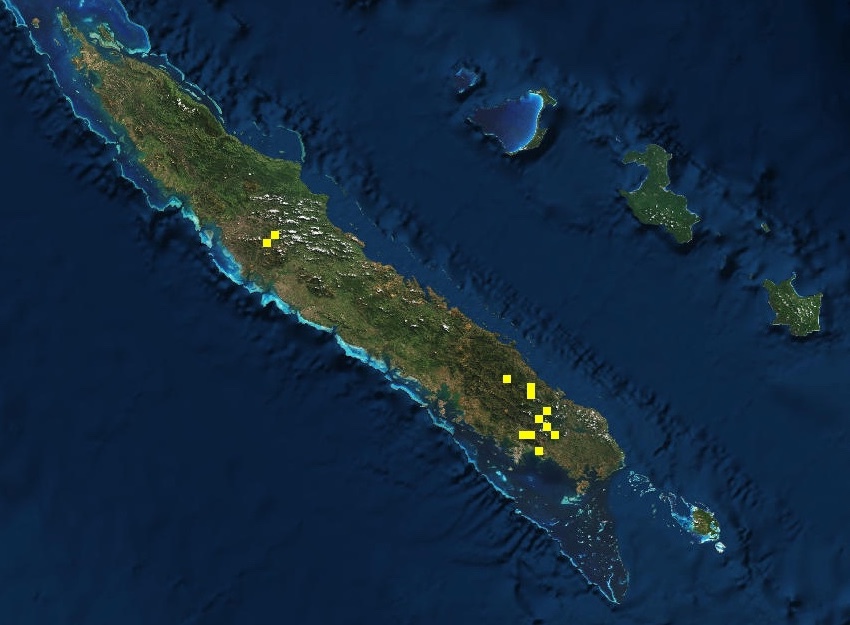
Libocedrus austrocaledonica, as described in 1871 by Adolphe-Théodore Brongniart (1801-1876) and August Heinrich Rudolf Grisebach (1814-1879), in Annales des Sciences Naturelles; Botanique, sér. 5, is commonly known as Dwarf incense cedar. The epithet refers to the species occurrence in southern New Caledonia.
Ethnobotany. According to Aljos Farjon in A Handbook of the World's Conifers, "no known use by indigenous peoples, no known use in horticulture, and very uncommon in botanical gardens."
Description. Dwarf incense cedar is an evergreen coniferous species of shrub or small tree that grows to mature heights of 20 feet (6 m) tall, usually with several stems branching near the base to form an open crown conforming to the Mangenot model (often narrowly conical in single-stemmed individuals).

Distribution. This species is native to New Caledonia, primarily in the southern province with one disjunct northern population on Mount Paéoua. The tree grows at elevations of 2,400 to 4,500 feet (750 to 1,400 m) above sea level, chiefly on strongly humic/acidic soils but not on ultramafics (which is a bit unusual for New Caledonia conifers). Annual rainfall is typically over 140 inches (3,500 mm) with nearly continuous cloud cover. Grows in low, shrubby rainforest, commonly with the conifers Falcatifolium taxoides, Neocallitropsis pancheri, Prumnopitys ferruginea, Podocarpus spp., and occasional Araucaria humboldtensis; and with angiosperms such as species of Myrtaceae, Trimeniaceae, and Winteraceae, as will as with abundant ferns and many epiphytic mosses and lichens.
Hardy to USDA Zone 10, cold hardiness limit between 30º and 40ºF (-1° and +4.4°C).


